The keto diet is one of the most popular dietary trends of the last decade, attracting attention from individuals aiming to lose weight, improve mental clarity, and boost energy levels. But what exactly is the keto diet, how does it work, and why has it become so popular? This comprehensive guide will cover everything you need to know, especially if you’re a beginner, including food lists, meal plans, and tips to help you succeed.
- What is the Keto Diet?
- How Does the Keto Diet Work?
- Keto Diet Foods: What Can You Eat?
- How to Structure a Keto Diet Meal Plan
- Keto Diet for Weight Loss: How Effective Is It?
- Keto Diet for Beginners: Tips to Stay on Track
- Special Keto Considerations: Women Over 50 and Vegetarians
- Conclusion
- Frequently Asked Questions (FAQ) About the Keto Diet
- What is the keto diet?
- How does ketosis work?
- What foods can I eat on the keto diet?
- Can I eat fruits on the keto diet?
- Is the keto diet safe?
- How long does it take to enter ketosis?
- What are some signs that I’m in ketosis?
- What is the keto flu?
- Can I exercise on the keto diet?
- Can I build muscle on the keto diet?
- Can I have cheat days on the keto diet?
- Are there any side effects of the keto diet?
- What supplements should I take on the keto diet?
- Can I follow the keto diet if I’m vegetarian or vegan?
- How do I know if the keto diet is right for me?
- What happens if I accidentally eat too many carbs?
- Can I drink alcohol on the keto diet?
- How much weight can I lose on the keto diet?
- What is the difference between lazy keto and strict keto?
- Is the keto diet safe long-term?
What is the Keto Diet?
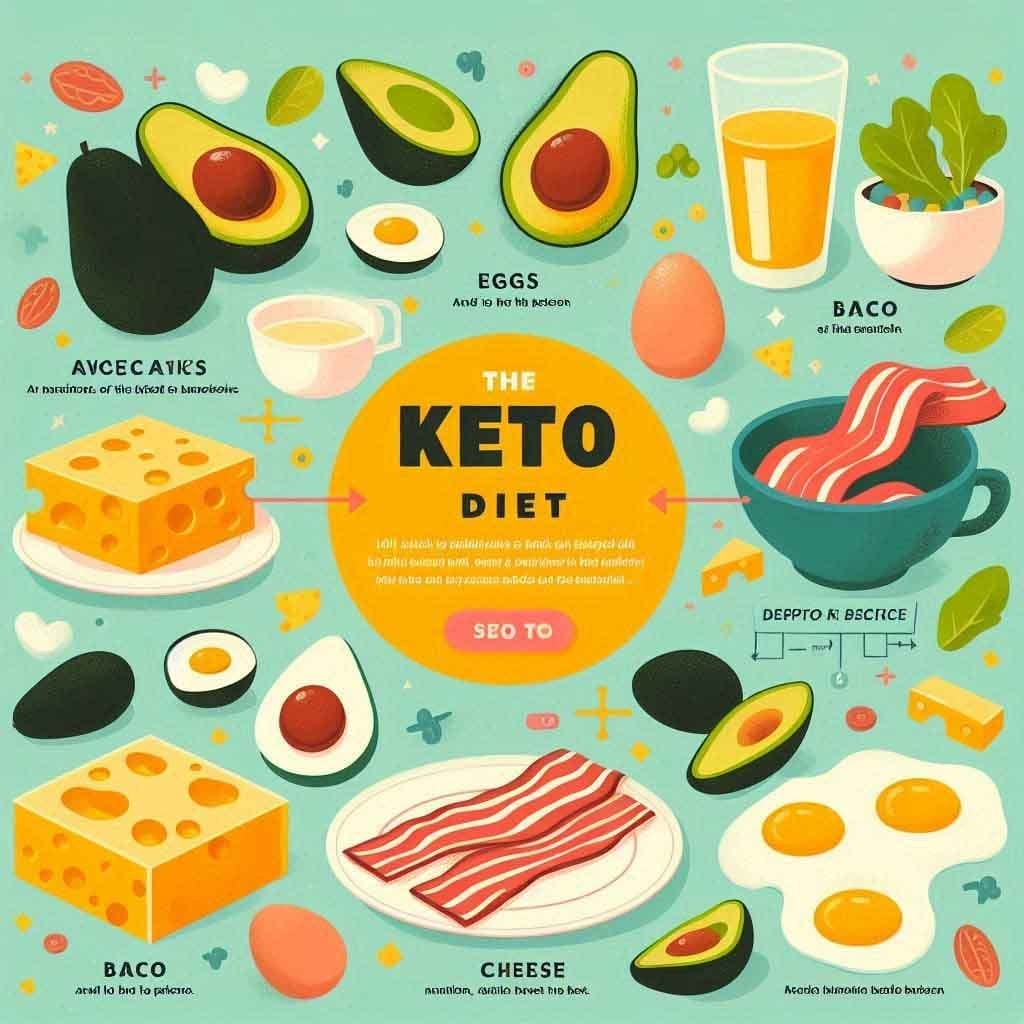
At its core, the keto diet is a low-carb, high-fat diet that changes the way your body uses energy. Instead of relying on glucose (which is derived from carbohydrates), your body shifts to burning fat for fuel, leading to a state called ketosis. This is the process where the liver produces ketones—an alternative energy source from fat that fuels the brain and body.
In a typical Western diet, carbohydrates provide the bulk of daily energy needs. In the keto diet, however, the carbohydrate intake is drastically reduced (typically 20-50 grams per day), and fat becomes the primary macronutrient, making up 70-80% of your daily calories, with protein contributing around 10-20%.
How Does the Keto Diet Work?
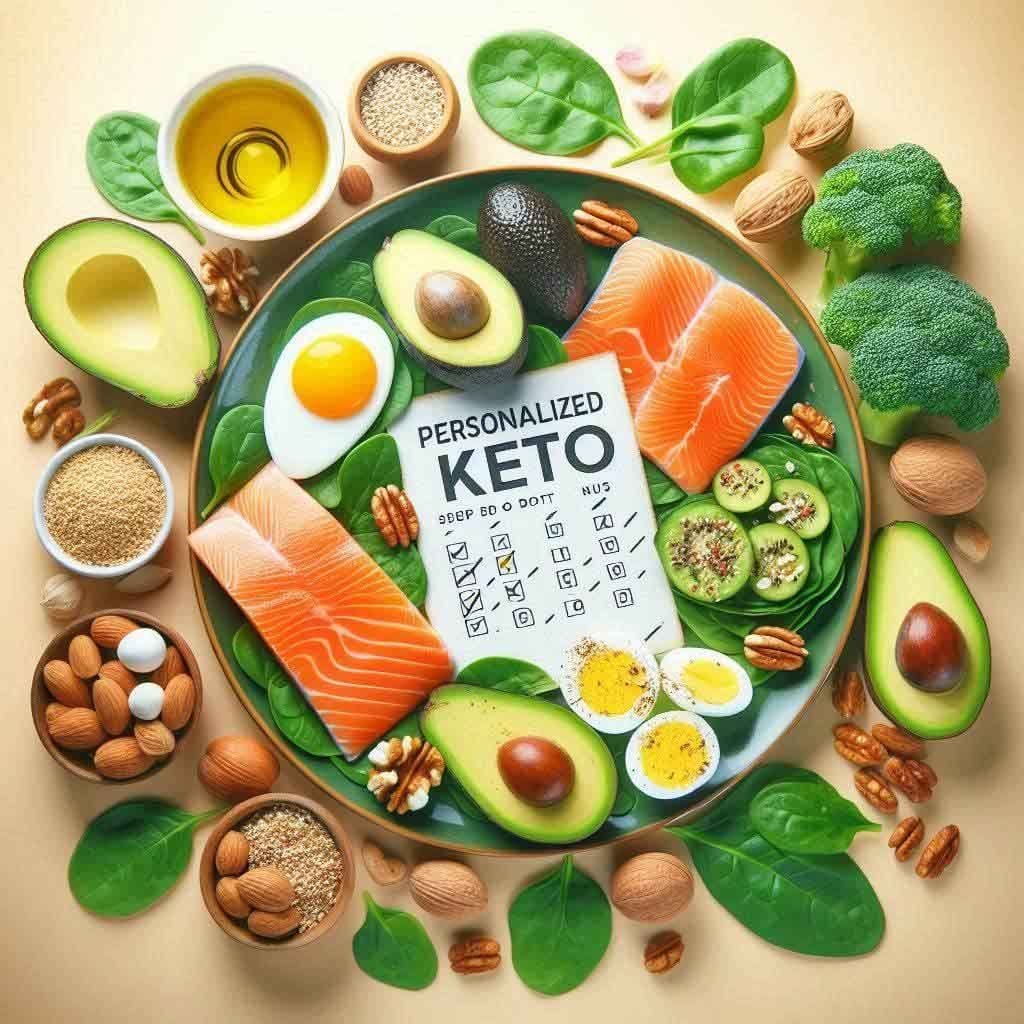
The keto diet works by altering the body’s metabolism. Normally, your body breaks down carbohydrates into glucose for energy. However, when you significantly reduce your intake of carbs, your glycogen stores are depleted. This prompts the liver to convert fat into ketones, which then become the main source of energy.
The state of ketosis has various effects on the body:
- Fat-burning: With less glucose available, your body burns stored fat for energy, leading to weight loss.
- Stable energy levels: Since fat is a more stable energy source, you avoid the spikes and crashes in energy that are common with high-carb diets.
- Mental clarity: Many people report improved mental focus and cognitive function on the keto diet because ketones provide a consistent fuel source for the brain.
Keto Diet Foods: What Can You Eat?

When following the keto diet, understanding what foods you can and cannot eat is critical. Below is a comprehensive keto food list that will help you maintain ketosis.
Keto-Friendly Foods
- Meats: Beef, pork, chicken, turkey, and lamb. Aim for fattier cuts, as they will help you reach your fat intake goals.
- Fish: Fatty fish like salmon, tuna, sardines, and mackerel are rich in omega-3 fatty acids and essential for the keto diet.
- Eggs: Eggs are versatile, packed with nutrients, and are one of the staples of a keto breakfast.
- Cheese: Most cheeses are low in carbs and high in fat. Options include cheddar, mozzarella, cream cheese, and goat cheese.
- Oils and Fats: Olive oil, coconut oil, avocado oil, butter, and ghee are excellent sources of fat that should be included in your meals.
- Nuts and Seeds: Almonds, walnuts, flaxseeds, chia seeds, and macadamia nuts are perfect for snacks or as meal toppers.
- Low-Carb Vegetables: Non-starchy vegetables such as spinach, kale, broccoli, zucchini, and cauliflower are keto staples. They are low in carbs and high in fiber.
- Avocados: Avocados are an excellent source of heart-healthy fats and fiber, making them ideal for the keto diet.
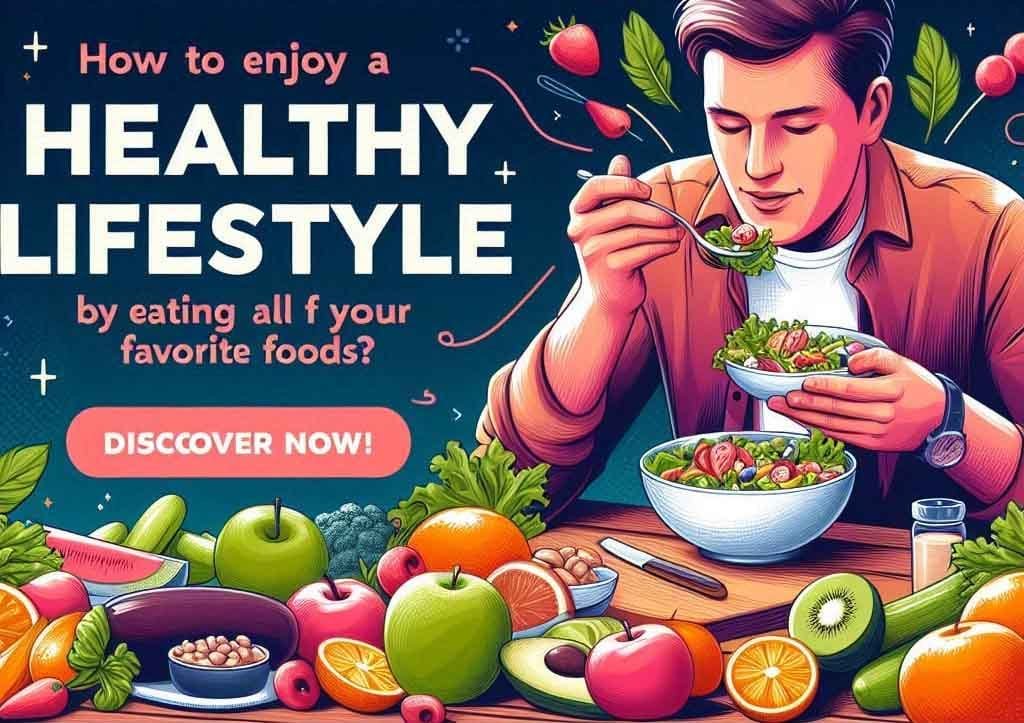
Foods to Avoid on Keto
While the keto diet encourages high fat intake, certain foods must be avoided to maintain ketosis:
- Sugary foods: This includes soda, candy, baked goods, and any high-sugar product.
- Grains and Starches: Foods like bread, pasta, rice, and cereals are too high in carbs to be part of a keto meal plan.
- Fruits: While some fruits like berries can be eaten in moderation, most fruits are high in sugars (carbs) and should be avoided.
- Legumes: Beans, lentils, and chickpeas are high in carbohydrates and should be excluded.
- High-carb Vegetables: Vegetables like potatoes, corn, and carrots are too starchy for the keto diet.
How to Structure a Keto Diet Meal Plan
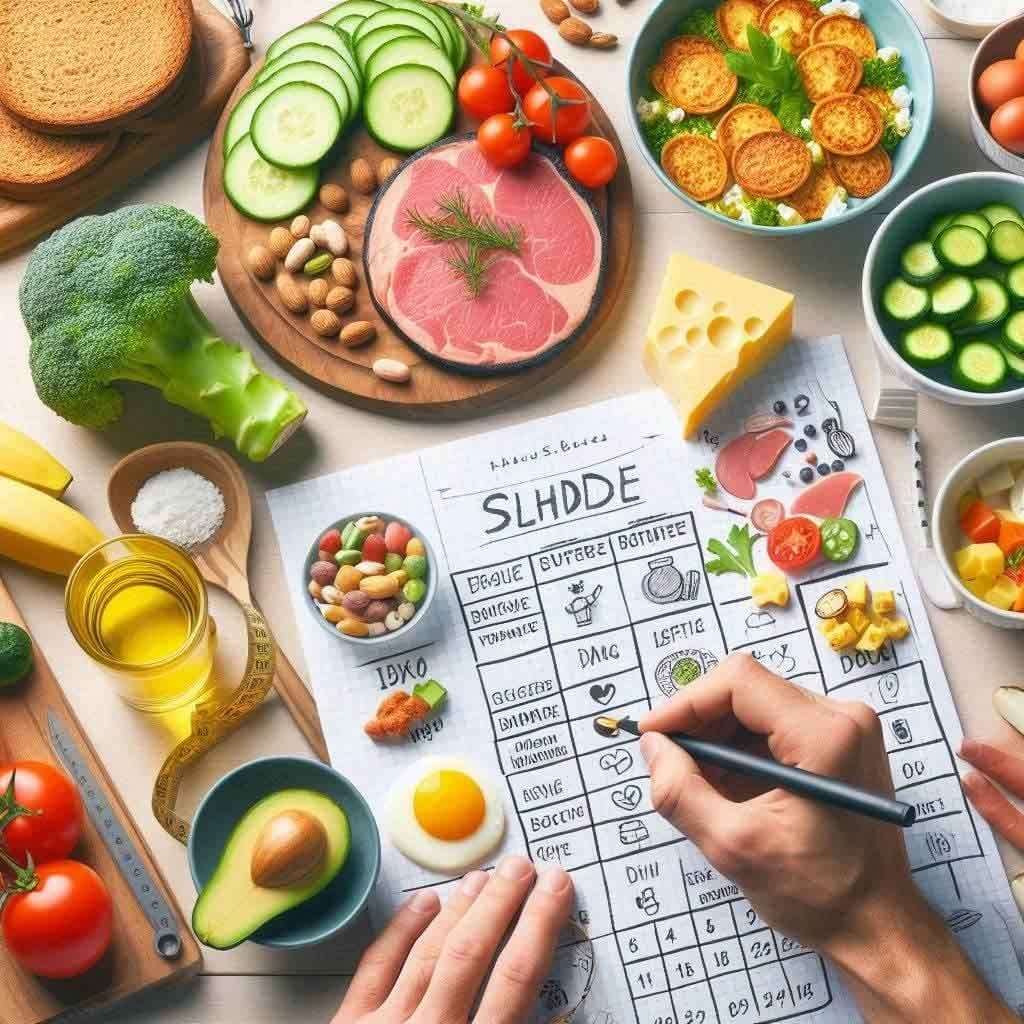
Creating a keto meal plan may seem intimidating at first, but with some planning, it can become a simple and enjoyable process. Whether you’re a beginner or have some experience with low-carb diets, here’s a sample keto diet meal plan to help you get started.
Sample Keto Meal Plan for a Day
Breakfast:
- 3 scrambled eggs cooked in butter, with a side of avocado and spinach.
- Keto bread toasted with cream cheese.
- Bulletproof coffee (coffee blended with butter and coconut oil).
Lunch:
- Grilled chicken salad with mixed greens, cucumber, avocado, and olive oil dressing.
- A side of keto-friendly gummy bears as a snack.
Dinner:
- Grilled salmon with a side of cauliflower mash and sautéed asparagus in olive oil.
- Keto-approved chocolate or dessert made with keto chocolate for a sweet treat.
Snacks:
- Hard-boiled eggs, cheese sticks, or keto-friendly snacks like nuts and seeds throughout the day.
Preparing Easy Keto Meals
For those short on time, preparing easy keto meals can help you stick to the diet without spending hours in the kitchen. Here are some meal ideas that require minimal effort:
- Keto pasta is made from zucchini noodles (zoodles) with pesto or marinara sauce.
- Keto-approved low-carb bread topped with avocado and bacon.
- Keto ramen made with shirataki noodles and broth, garnished with boiled eggs and bok choy.
Keto Diet for Weight Loss: How Effective Is It?
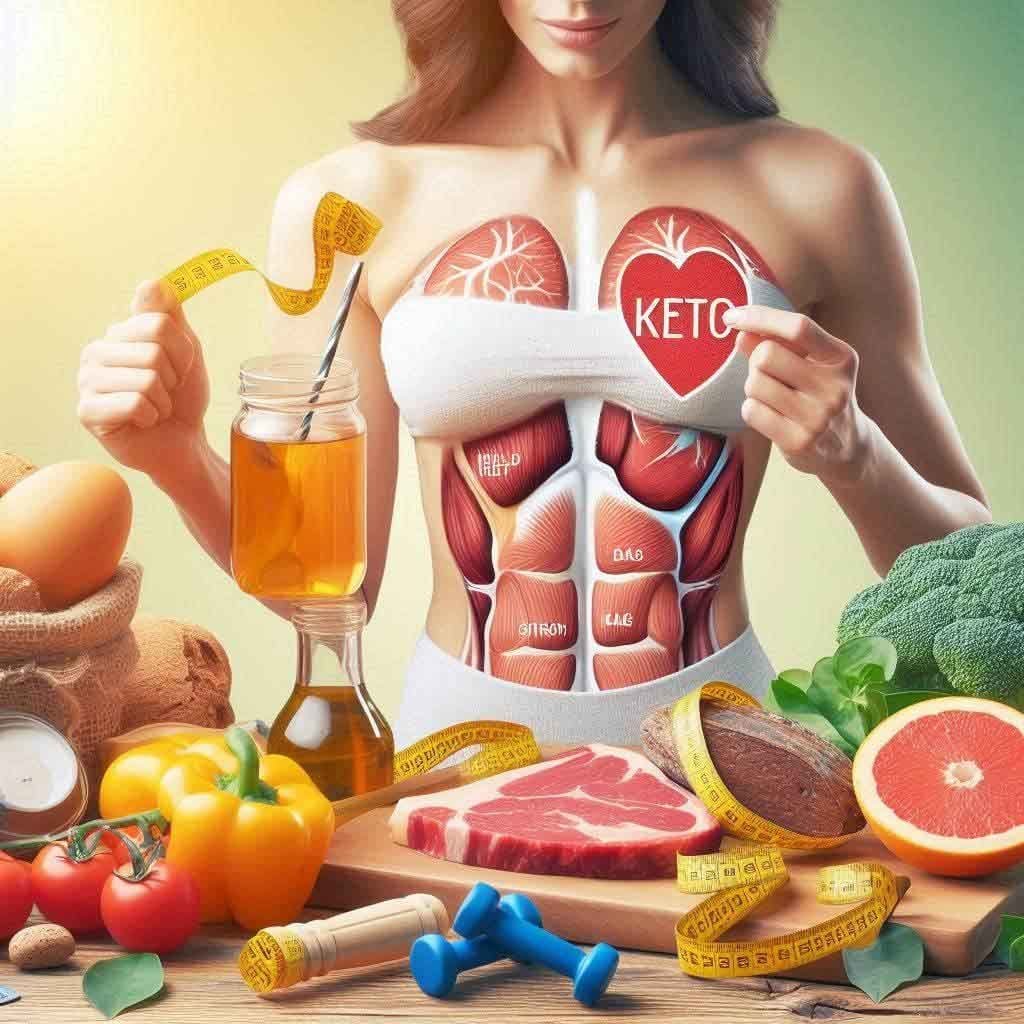
One of the main reasons people turn to the keto diet is its effectiveness for weight loss. When you’re in ketosis, your body becomes a fat-burning machine, converting fat into ketones that power your body. This leads to significant weight loss, especially in the first few weeks as the body adapts to burning fat instead of carbs.
Why Keto Works for Weight Loss
- Reduced appetite: The high fat and moderate protein content of the diet make you feel fuller for longer, reducing overall calorie intake.
- Improved insulin sensitivity: The keto diet helps stabilize blood sugar levels, which can help people with insulin resistance or type 2 diabetes lose weight more effectively.
- Fat loss without muscle loss: The moderate protein intake helps preserve lean muscle mass, ensuring that most of the weight lost comes from fat.
Weight Loss Plateau: What to Do?
After a few weeks, some people may experience a weight loss plateau on the keto diet. If this happens, consider the following strategies:
- Reduce carb intake: Ensure you’re sticking to the recommended carb intake (20-50 grams/day).
- Increase physical activity: Regular exercise, especially strength training, can help break through plateaus.
- Consider fasting: Intermittent fasting can help accelerate ketosis and fat loss when combined with the keto diet.
Keto Diet for Beginners: Tips to Stay on Track

For beginners, transitioning to the keto diet can be challenging, but with a few simple tips, you can make the process smoother and more enjoyable:
Tips for a Successful Keto Journey
- Start slow: Don’t drastically reduce your carb intake overnight. Gradually reduce carbs to avoid symptoms of the “keto flu” (which includes headaches, fatigue, and irritability as your body adapts to ketosis).
- Stay hydrated: Ketosis increases the risk of dehydration, so drink plenty of water throughout the day.
- Electrolyte balance: When you lose water weight, you also lose essential electrolytes like sodium, potassium, and magnesium. Add more salt to your meals or consider supplements.
- Use a keto app: Tools like Keto Cycle Diet or Keto Mojo can help track your macros and monitor your progress.
- Prepare in advance: Keep a keto-friendly food list handy for grocery shopping and plan your meals to avoid temptation.
Keto Supplements to Enhance Results
While not necessary for success, some people choose to use keto supplements to enhance their results. Here are some of the most popular options:
- Exogenous ketones: These help increase blood ketone levels, making it easier to achieve and maintain ketosis.
- MCT oil: Medium-chain triglycerides (MCTs) are a type of fat that is quickly converted into ketones, providing a quick energy boost.
- Electrolyte supplements: These can help replenish the electrolytes lost during ketosis, reducing symptoms of the “keto flu.”
Special Keto Considerations: Women Over 50 and Vegetarians
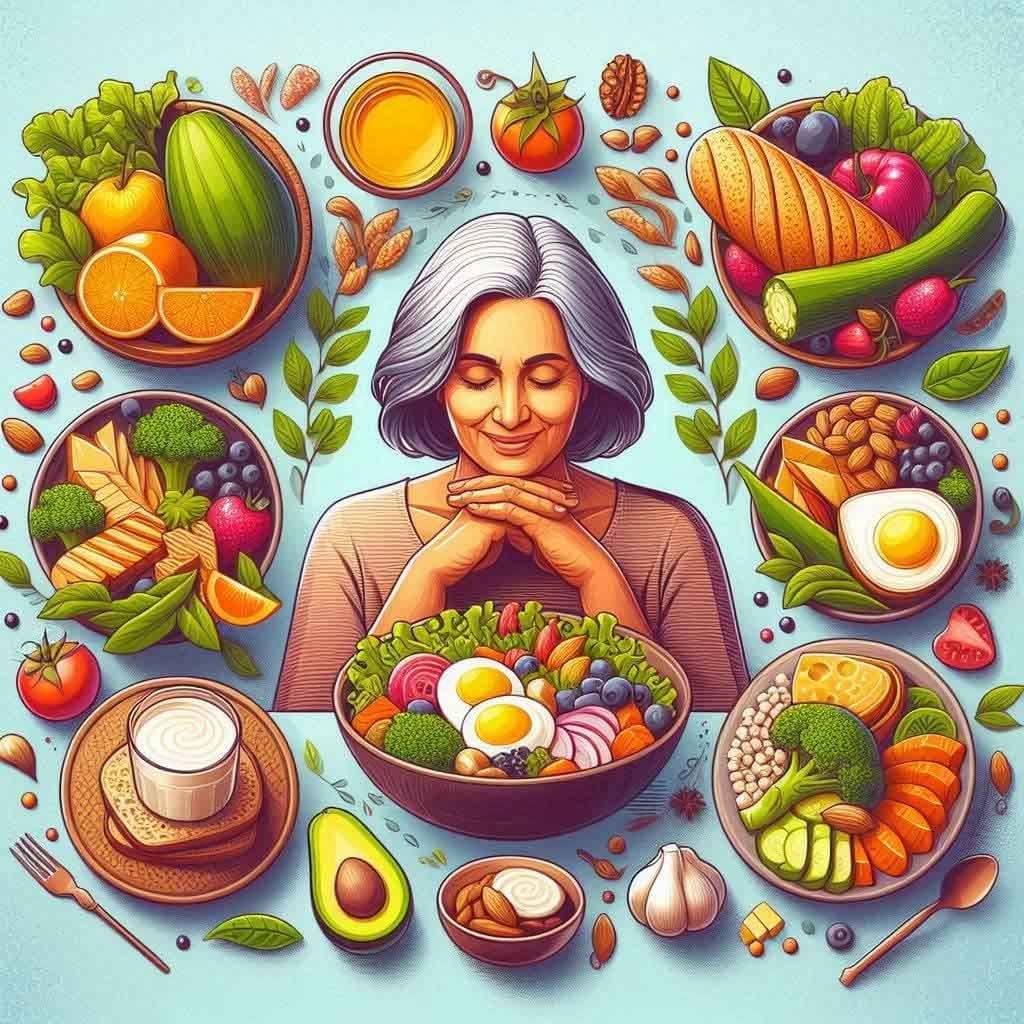
Keto for Women Over 50
The keto diet can be particularly beneficial for women over 50. As women age, their metabolism tends to slow down, making weight loss more challenging. The keto diet helps counter this by promoting fat loss while preserving muscle mass, which is essential for maintaining a healthy metabolism.
Vegetarian Keto Diet
Though the keto diet is often associated with high meat consumption, it is possible to follow a vegetarian keto diet. Focus on high-fat plant-based foods like avocados, nuts, seeds, and oils, and incorporate low-carb vegetables and vegetarian protein sources like tofu, tempeh, and eggs.
Conclusion
The keto diet is more than just a weight loss tool—it’s a lifestyle that can help you achieve lasting health benefits, from improved mental clarity to enhanced energy levels. Whether you’re a beginner or someone looking to refine your keto meal plan, the key to success lies in understanding the foods you eat, tracking your progress, and making adjustments as needed.
With this comprehensive guide, you now have everything you need to embark on your keto diet journey. From understanding keto-friendly foods to preparing delicious and easy keto meals, you’re well-equipped to thrive on the keto diet. Stay consistent, be patient, and enjoy the incredible benefits that come with entering ketosis!
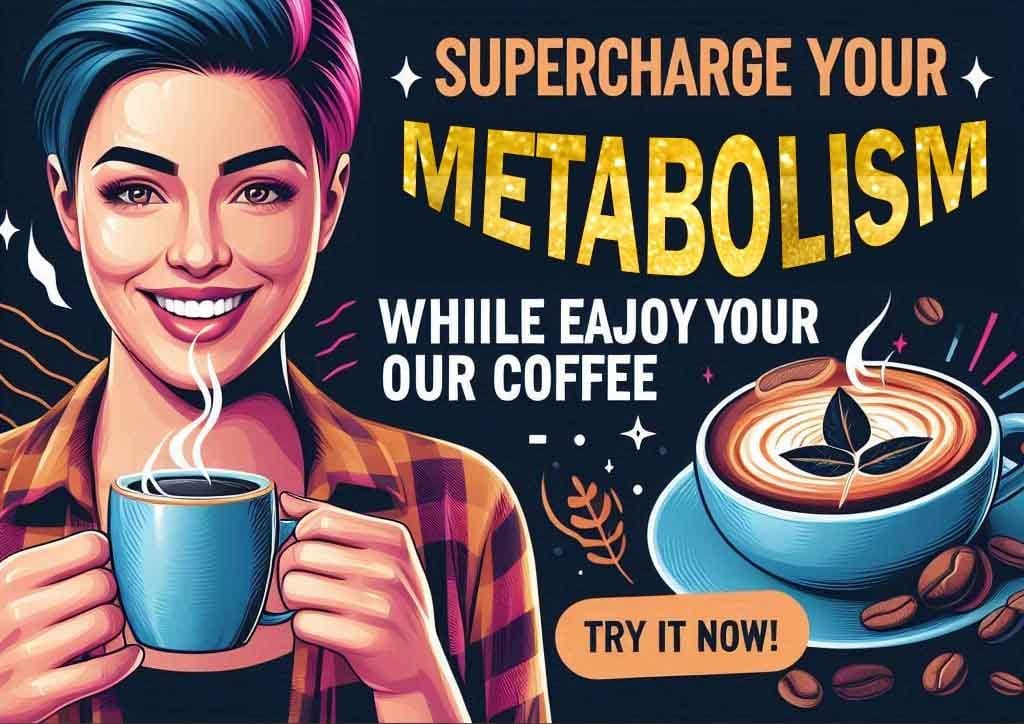
Frequently Asked Questions (FAQ) About the Keto Diet
What is the keto diet?
The keto diet is a low-carb, high-fat diet designed to shift your body into a state of ketosis, where fat is burned for energy instead of carbohydrates. By drastically reducing carb intake, the body relies on fat as its primary fuel source.
How does ketosis work?
In ketosis, your liver converts fats into ketones, which are used for energy. This shift occurs when carb intake is reduced to 20-50 grams per day, depleting the body’s glycogen stores and forcing it to burn fat for fuel.
What foods can I eat on the keto diet?
On the keto diet, you should eat high-fat foods like meat, fatty fish, eggs, cheese, nuts, seeds, and oils. Low-carb vegetables like spinach, kale, and zucchini are also encouraged, while carbs like bread, pasta, rice, and sugary foods should be avoided.
Can I eat fruits on the keto diet?
Most fruits are high in sugar and carbs, making them unsuitable for the keto diet. However, small portions of low-carb fruits like berries (strawberries, raspberries) can be consumed in moderation.
Is the keto diet safe?
For most people, the keto diet is safe, but it’s always a good idea to consult with a healthcare provider before starting, especially if you have underlying medical conditions like diabetes, heart disease, or kidney issues.
How long does it take to enter ketosis?
It typically takes 2-4 days of following the keto diet to enter ketosis, but this can vary depending on your body’s metabolism, activity level, and adherence to the diet.
What are some signs that I’m in ketosis?
1. Signs of ketosis include:
2. Increased energy
3. Mental clarity
4. Weight loss
5. Reduced appetite
6. Ketone breath (a metallic or fruity scent)
7. Keto strips or meters can also help measure ketone levels in your urine or blood.What is the keto flu?
The keto flu refers to flu-like symptoms (fatigue, headache, nausea, irritability) that some people experience when transitioning to ketosis. This happens because your body is adjusting to a new energy source. It usually lasts a few days and can be alleviated by drinking plenty of water, replenishing electrolytes, and gradually reducing carbs.
Can I exercise on the keto diet?
Yes, exercise is encouraged while on the keto diet. However, it may take a few weeks for your body to fully adapt to using fat as its primary energy source, so you might experience a temporary drop in performance. Once adopted, many people report improved endurance.
Can I build muscle on the keto diet?
Yes, you can build muscle on the keto diet by ensuring you consume enough protein and maintain a caloric surplus. However, since the keto diet is focused on fat rather than carbs, muscle gain might not be as fast as with a traditional high-carb diet.
Can I have cheat days on the keto diet?
Cheat days are generally discouraged on the keto diet because consuming a high amount of carbs can quickly kick you out of ketosis, and it may take several days to get back in. If you do have a cheat day, be prepared for a temporary stall in your progress.
Are there any side effects of the keto diet?
Short-term side effects can include the keto flu, digestive issues, and bad breath. Long-term effects are still being studied, but some experts suggest that diet may increase cholesterol levels in certain individuals. Always consult a doctor for advice tailored to your specific health.
What supplements should I take on the keto diet?
Common keto supplements include:
1. Electrolytes (sodium, potassium, magnesium) to prevent dehydration and balance minerals.
2. MCT oil to boost fat intake and increase ketone production.
3. Exogenous ketones to help boost ketone levels.
4. BHB (Beta-Hydroxybutyrate) to support energy levels during ketosis.Can I follow the keto diet if I’m vegetarian or vegan?
Yes, you can follow a vegetarian keto or vegan keto diet, but it requires more careful planning to ensure you get enough fats and proteins from non-animal sources. Focus on foods like avocados, nuts, seeds, oils, and low-carb vegetables.
How do I know if the keto diet is right for me?
The keto diet is ideal for people looking to lose weight, improve mental clarity, or manage conditions like type 2 diabetes. However, it’s not suitable for everyone. Speak with a healthcare professional to assess if the keto diet aligns with your health goals.
What happens if I accidentally eat too many carbs?
If you consume too many carbs, your body may temporarily exit ketosis, causing a stall in weight loss and a return to carb-based energy. It might take 1-3 days of strict low-carb eating to get back into ketosis.
Can I drink alcohol on the keto diet?
Yes, but it’s important to choose low-carb alcoholic drinks like spirits (vodka, whiskey) mixed with water or sugar-free mixers. Beer and sweet cocktails should be avoided due to their high carb content.
How much weight can I lose on the keto diet?
Weight loss varies from person to person, but many experience rapid weight loss in the first 1-2 weeks due to water weight. Sustainable fat loss occurs over time, and individuals often lose 1-2 pounds per week thereafter.
What is the difference between lazy keto and strict keto?
Strict keto involves tracking every gram of carbs, fat, and protein to ensure you stay within your macro goals and maintain ketosis.
Lazy keto focuses on keeping carb intake low but doesn’t require tracking other macros. This version is easier to follow but may yield slower results.Is the keto diet safe long-term?
Long-term safety is still being studied, but many people successfully follow the keto diet for extended periods. However, it’s essential to maintain a balanced intake of micronutrients and consider periodic breaks from the diet to prevent potential nutrient deficiencies. Regular check-ups with a healthcare provider are recommended.




